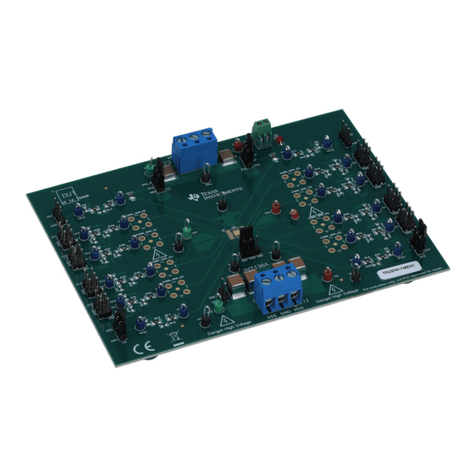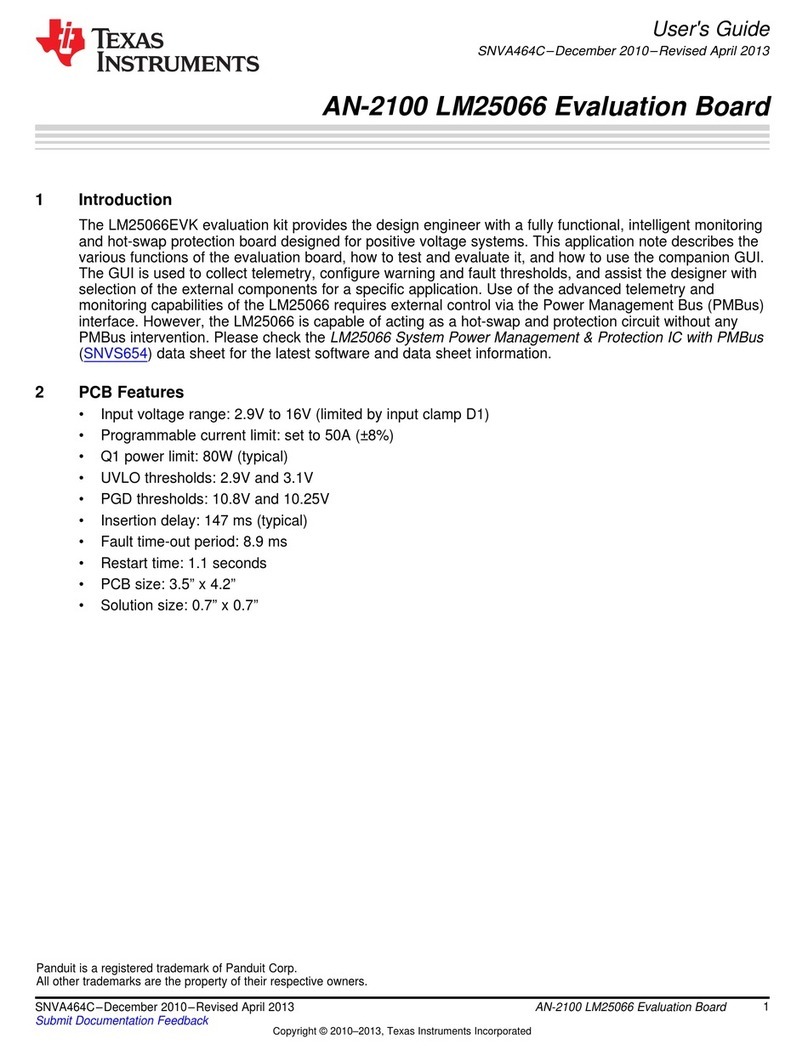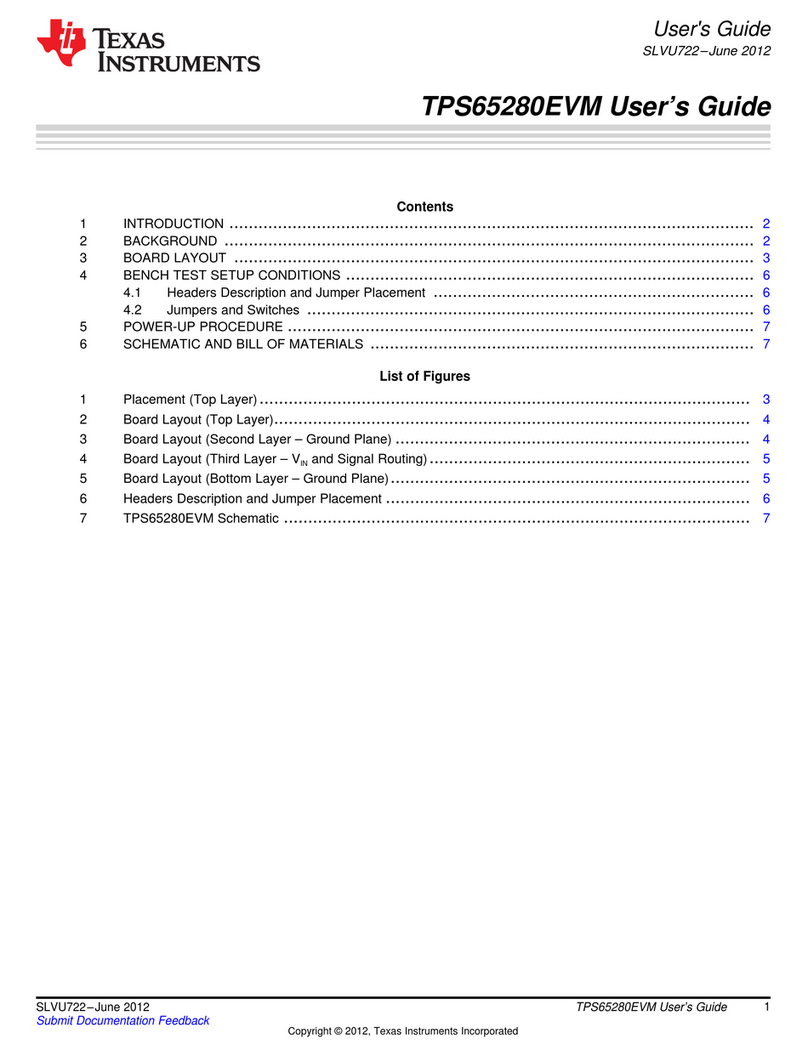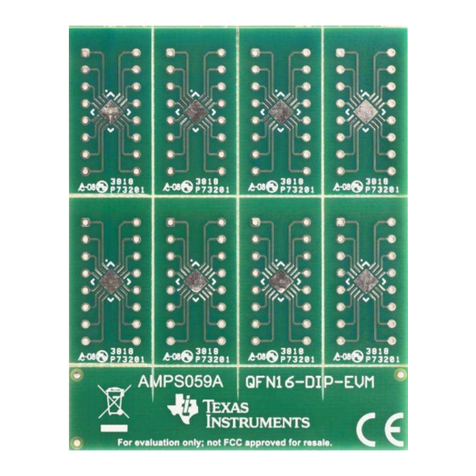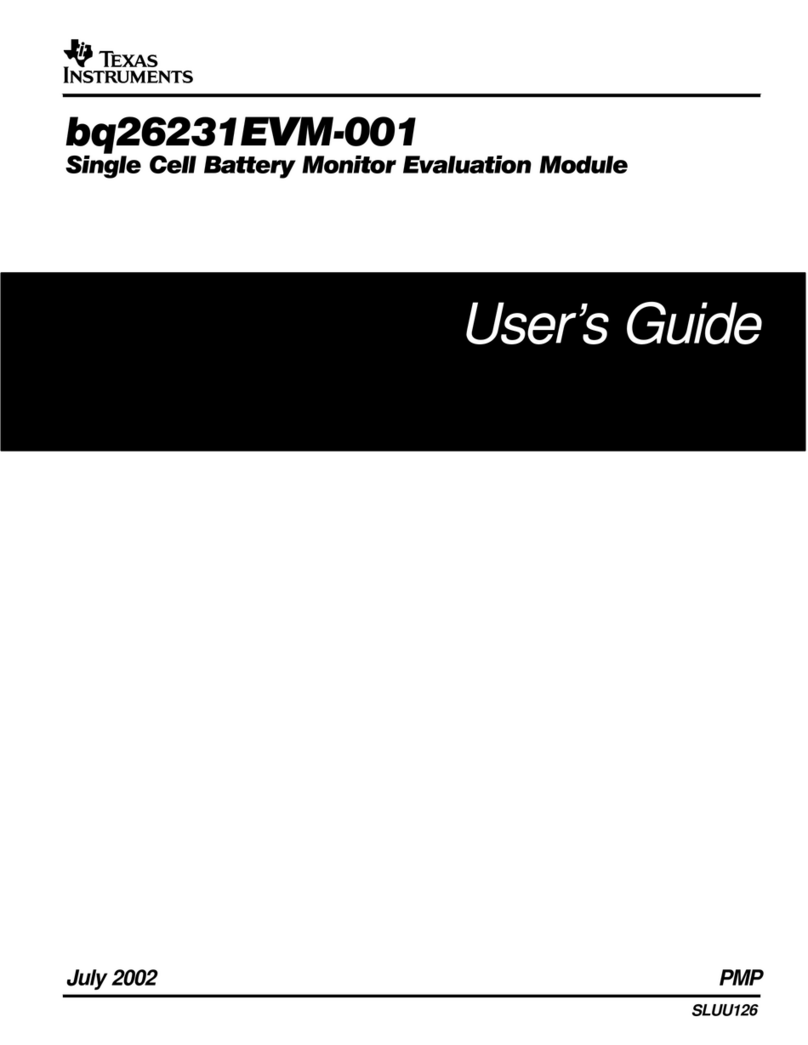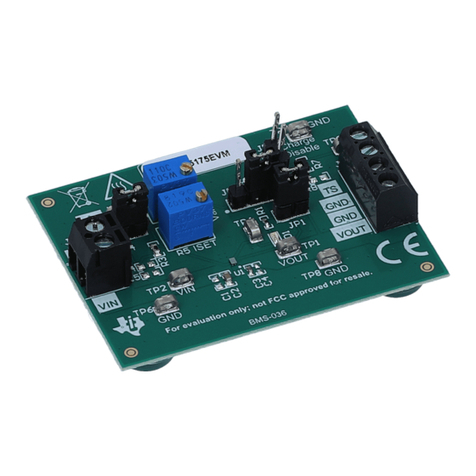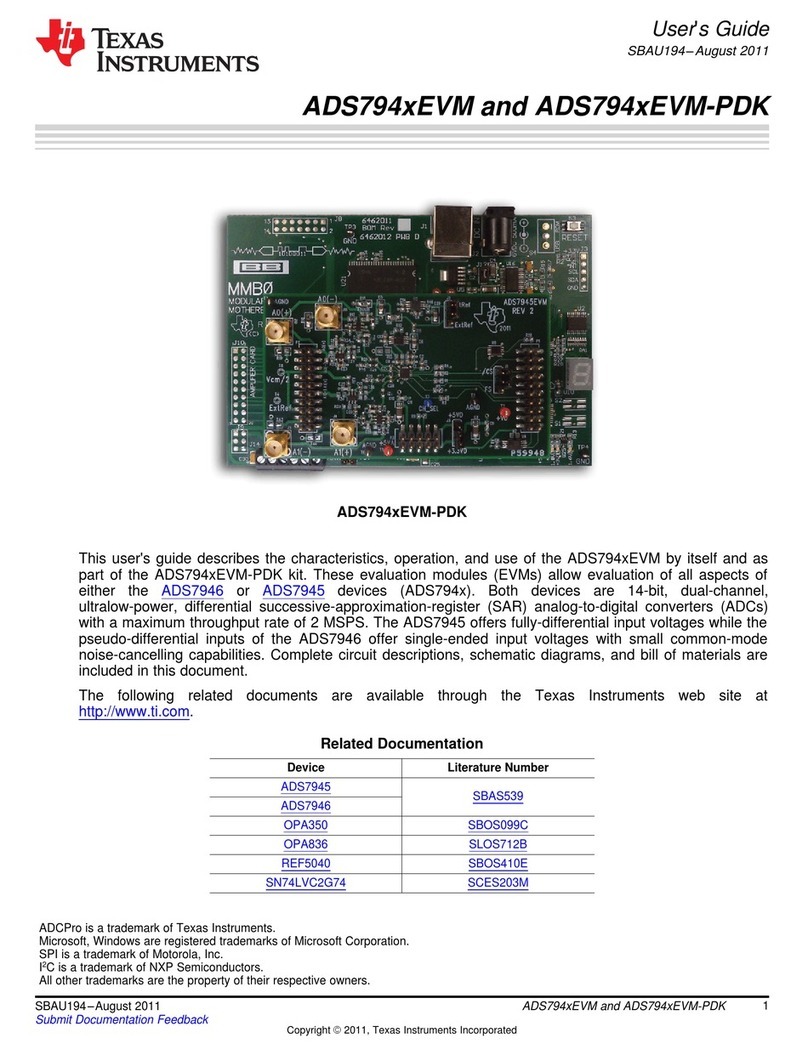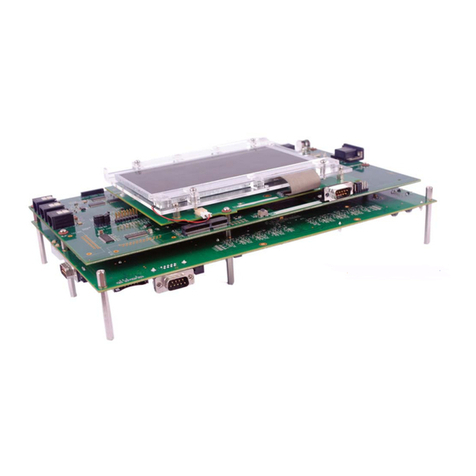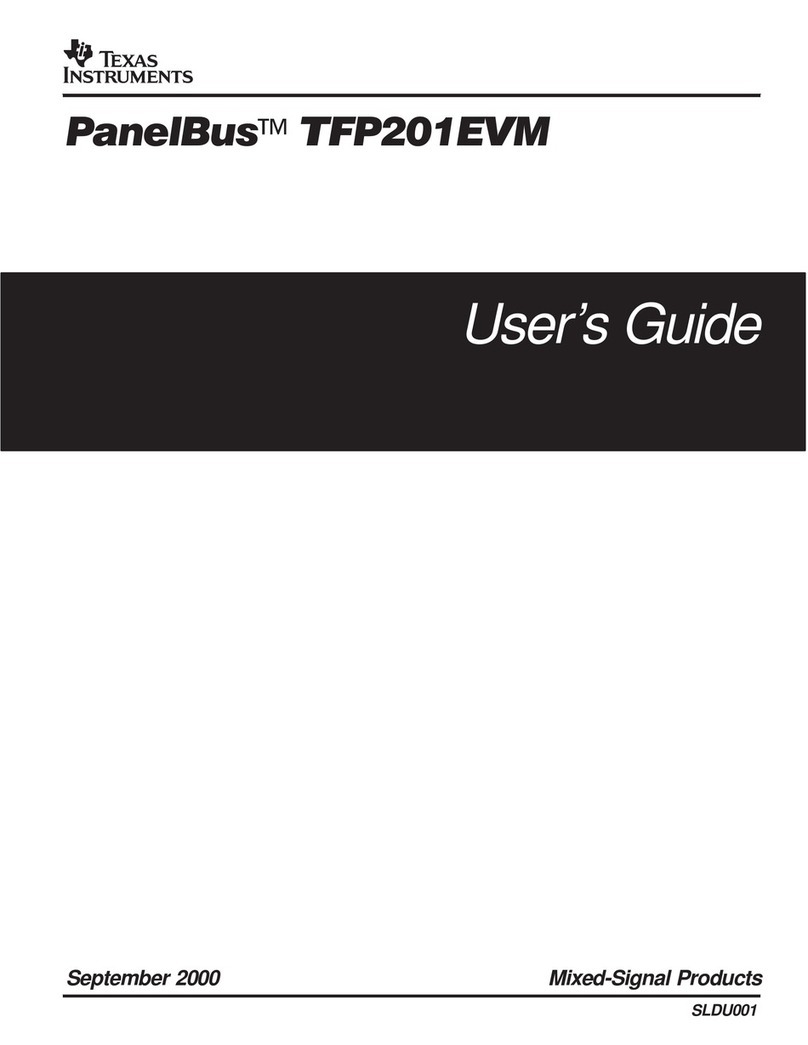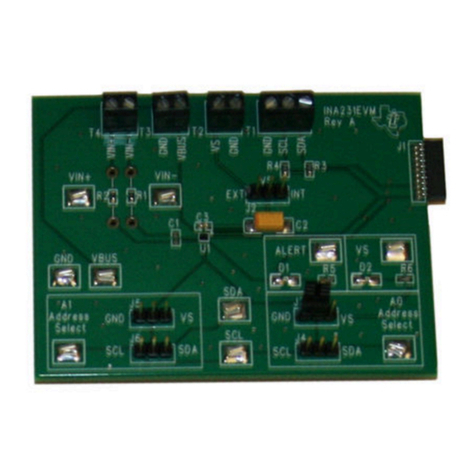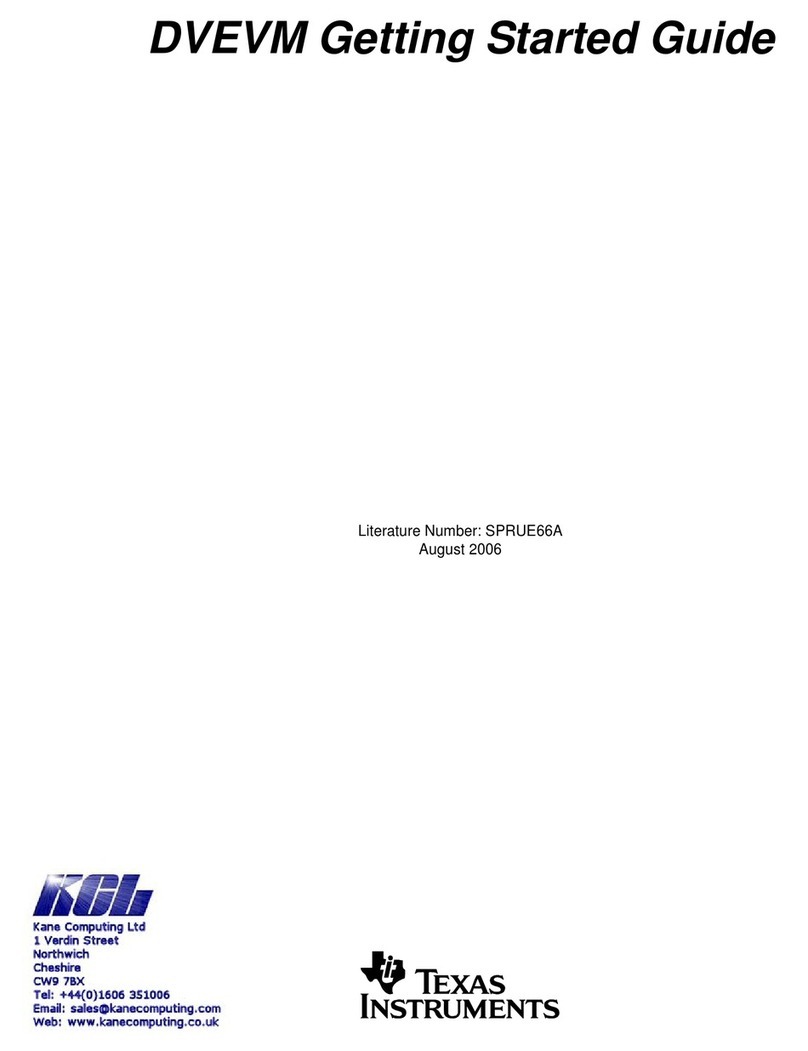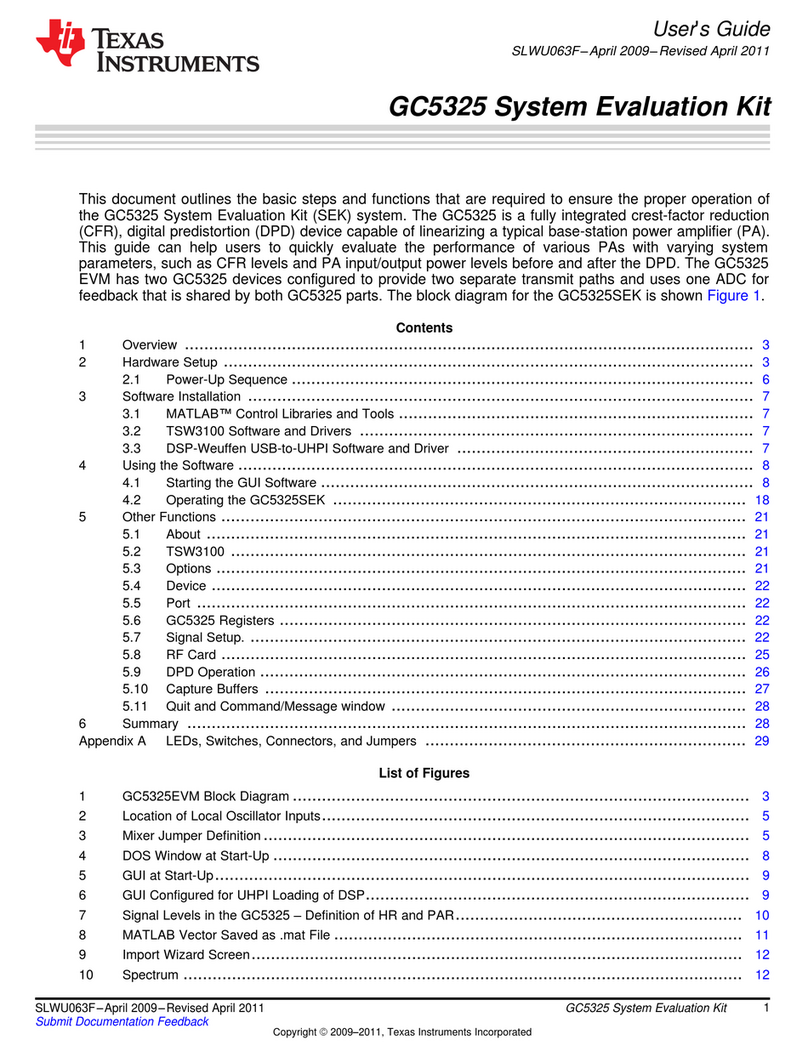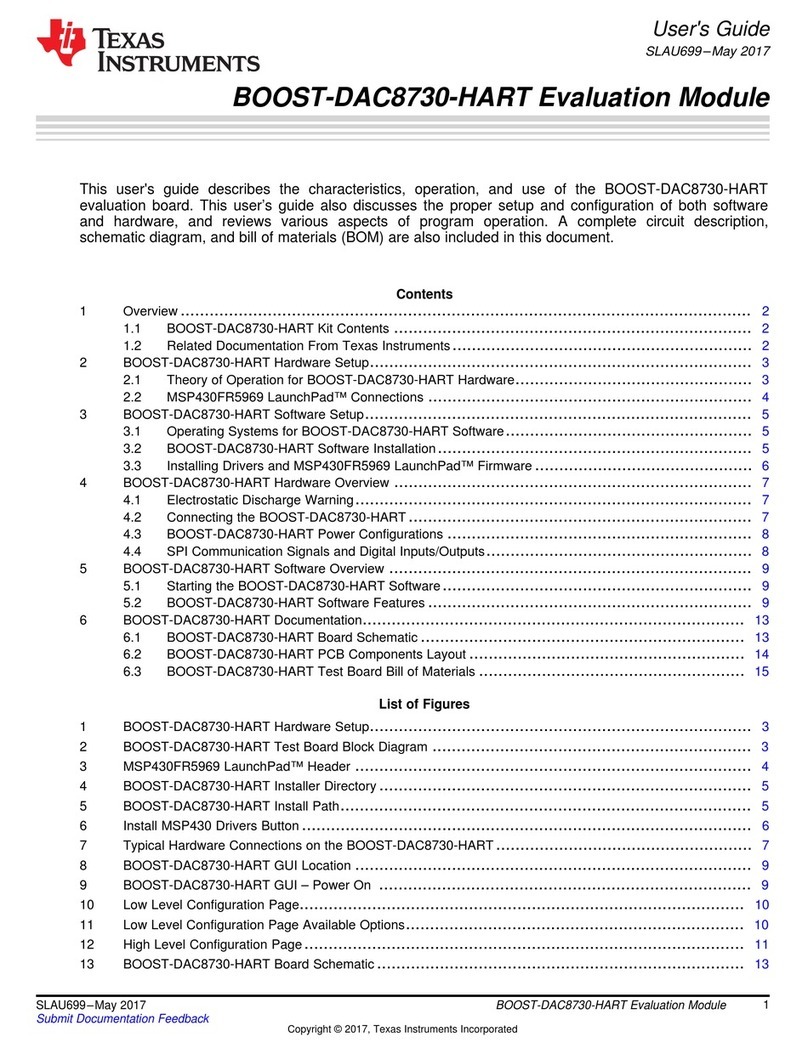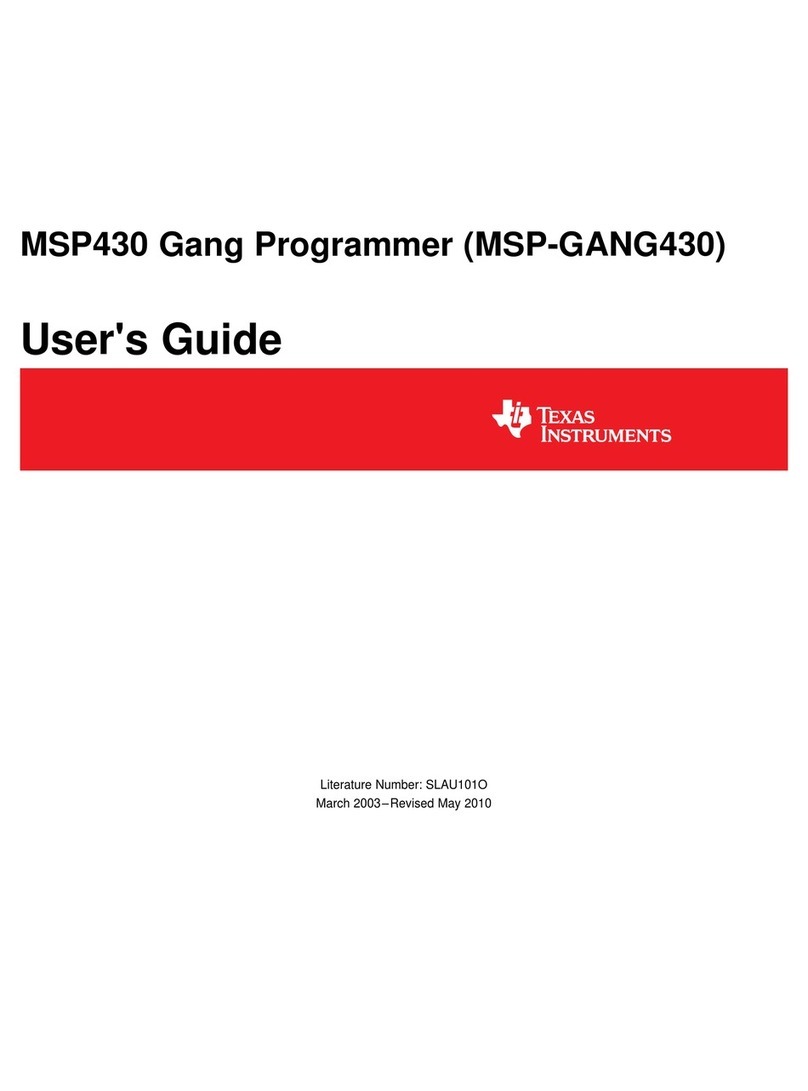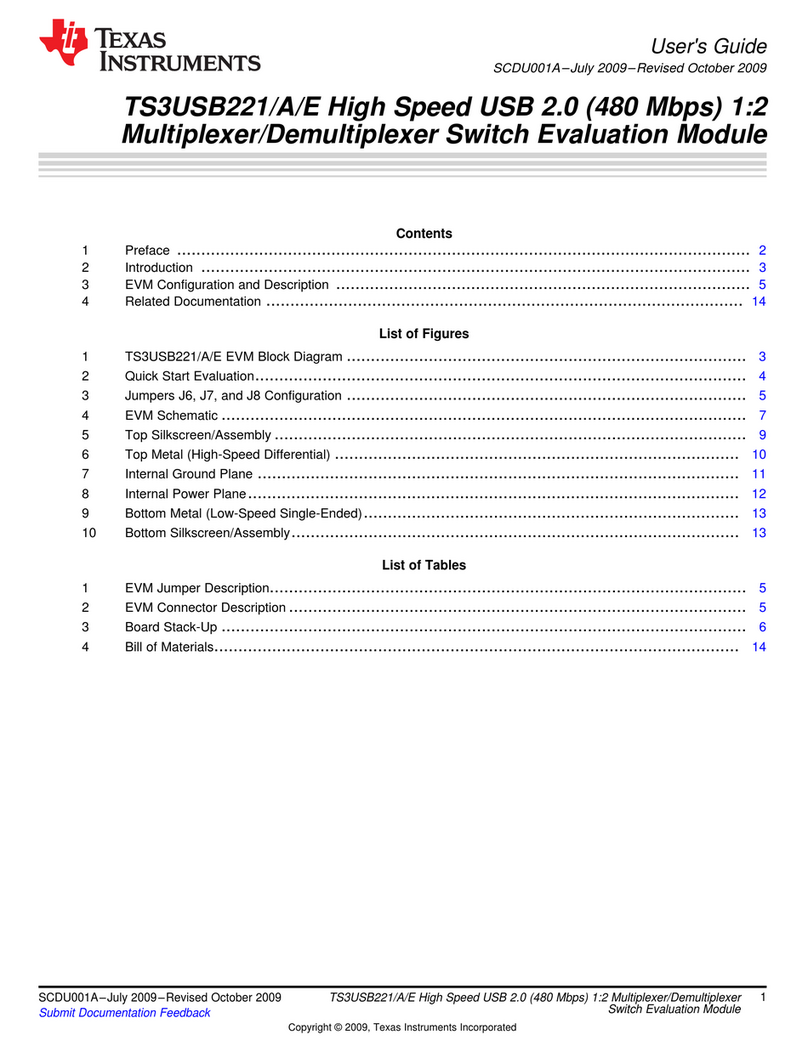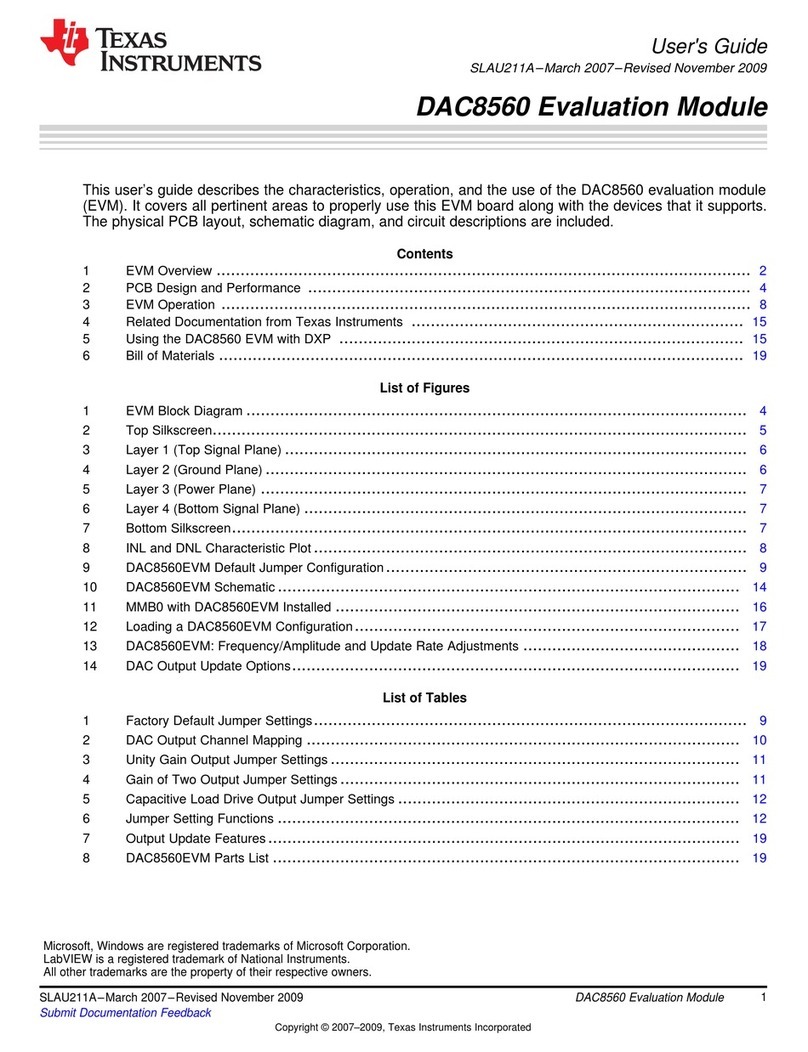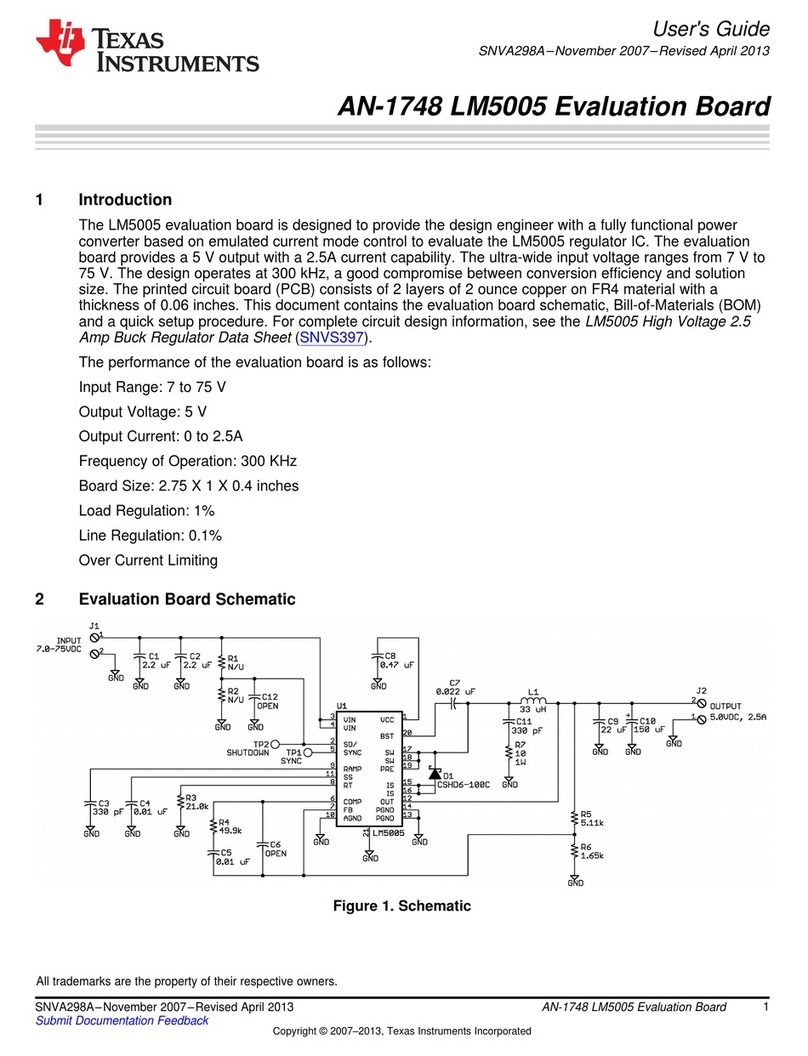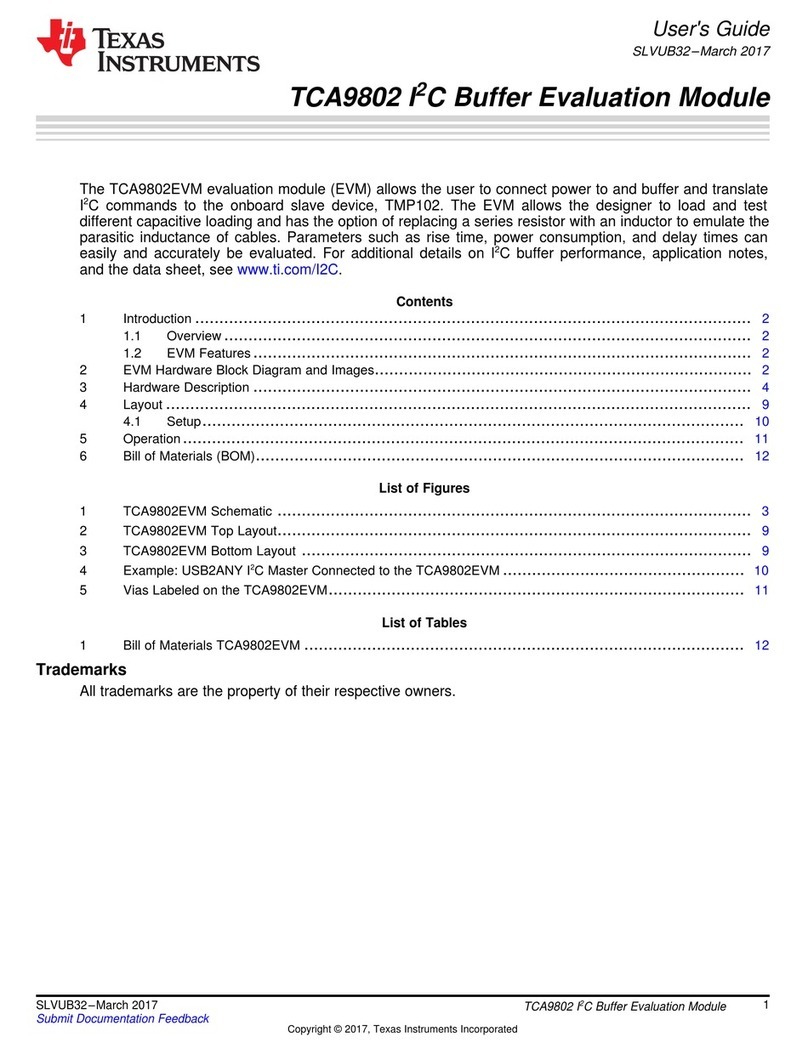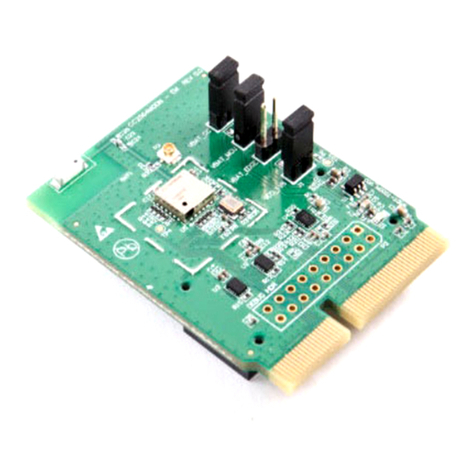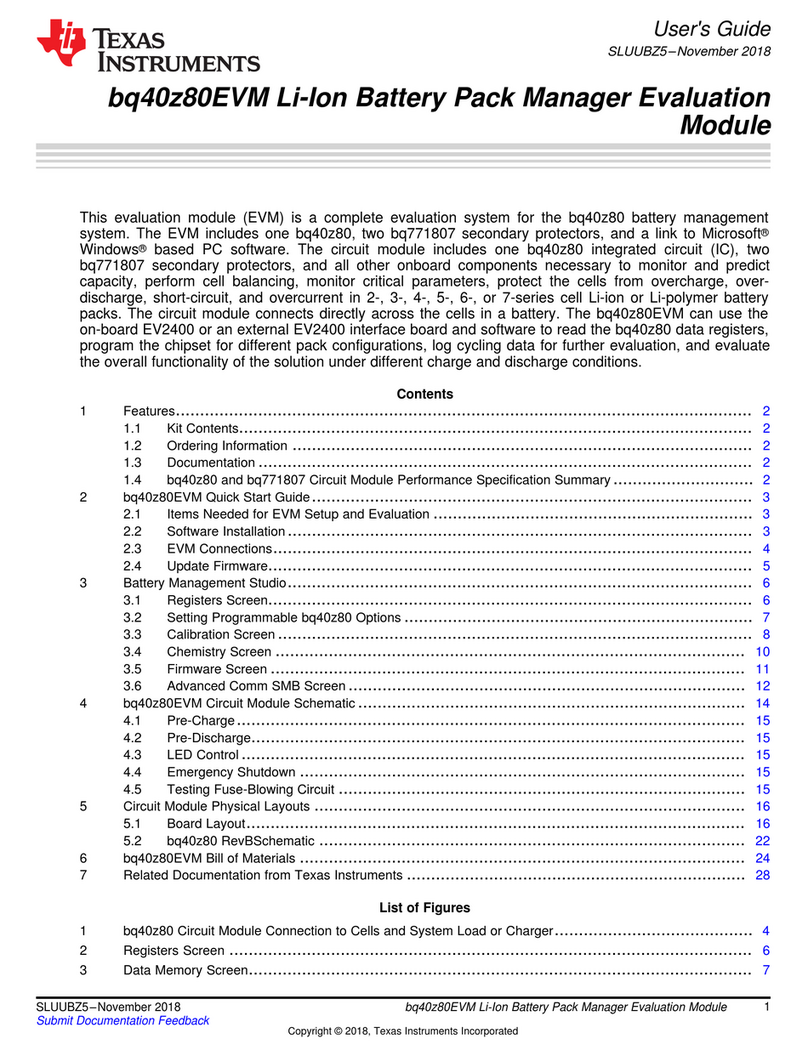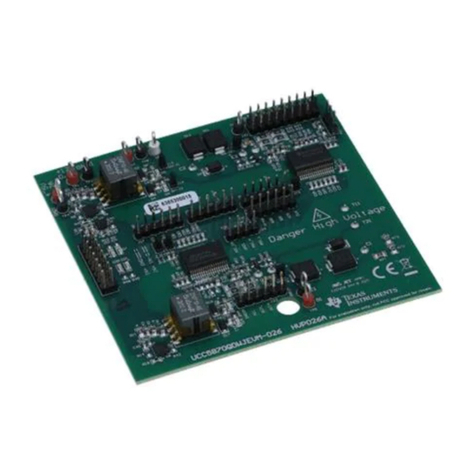
• Frequency input on SPEED pin by varying frequency of input signal
Configure the speed input [SPEED_MODE] register to select the desired speed input mode.
If PWM input on SPEED pin is chosen as the speed input, configure [SPEED_RANGE_SEL] to select the PWM
frequency range.
If Frequency input on SPEED pin is chosen as the speed input, configure [INPUT_MAXIMUM_FREQ] to select
the maximum PWM frequency. For example, if 10 kHz is chosen as maximum PWM frequency, 10 kHz PWM
signal on SPEED pin corresponds to 100% speed command.
Note that even when [SPEED_MODE] is configured as Analog input, PWM input, or Frequency input, the
[OVERRIDE] toggle can still be used to override the speed input using the in the I2C Control Section in GUI.
2.3 Control Configuration - Motor Parameters
2.3.1 Maximum Motor Electrical Speed (Hz)
Using the motor’s data sheet, the user can input the maximum motor electrical speed in Hz. If this data is not
available, the user can input the number of pole pairs and motor mechanical speed in RPM. The GUI converts
the motor mechanical speed in RPM to motor electrical speed in Hz using Equation 1 .
fElectrical =nPolePairs ∙ ωMecℎanical
60 (1)
Where:
• ωMechanical is the mechanical speed in units revolutions per minute (RPM)
• fElectrical is the electrical speed in units of hertz (Hz)
• nPolePairs is the number of motor pole pairs
Note
Determining number of motor poles without a motor data sheet:
1. Use a lab power supply and make sure the current limit is set to less than the motor rated current.
Do not turn on the supply
2. Connect V+ of the supply to phase A and V- of the supply to phase B of the motor. Any 2 of the 3
phases can be chosen at random if they are not labeled
3. Turn on supply The rotor settles at one position with the injecting current.
4. Manually rotate the rotor until rotor snaps to another settle position. The rotor has several settle-
down positions around one mechanical cycle
5. Count the number of settle-down positions for one fully mechanical cycle, which is the number of
pole pairs. Multiplying by two calculates the number of poles.
Be careful of gearing systems within a motor. The gearing ratio determines how many rotor revolutions
correlate to the shaft’s mechanical revolution.
2.4 Control configuration - Closed Loop
2.4.1 Current Limit for Torque PI Loop
The current limit for torque PI loop is the same as the rated peak phase current of the motor. Rated peak phase
current is the peak phase current drawn by the motor at rated torque of the motor. Check the motor data sheet
for the rated peak phase current of the motor in Amps. The range of current limit values that can be configured in
MCF8315A is between 0.078125 A and 5 A.
If your motor current rating falls between two dropdown settings, then choose the higher setting.
2.5 Testing for Successful Startup into Closed Loop
1. Apply a nonzero speed command
Essential Controls www.ti.com
6MCF8315A Tuning Guide SLLU363 – MAY 2023
Submit Document Feedback
Copyright © 2023 Texas Instruments Incorporated
